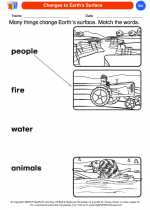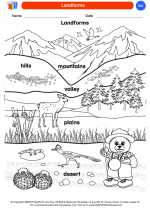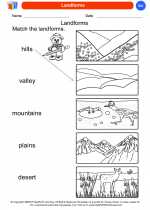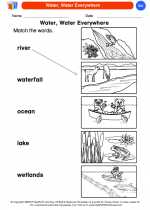Grasses
Grasses are flowering plants that belong to the Poaceae family. They are found in a variety of habitats, including prairies, savannas, and grasslands, and are one of the most widespread plant types on Earth. They are known for their slender leaves, hollow stems, and unique inflorescence structure.
Anatomy of Grasses
Grasses have several distinct anatomical features that set them apart from other plant species:
- Leaves: Grass leaves are long and narrow, with parallel veins running through them. This adaptation allows for efficient photosynthesis and minimizes water loss.
- Stems: The stems of grasses are usually hollow, which contributes to their lightweight and flexible nature.
- Roots: Grasses typically have fibrous root systems that spread out horizontally, enabling them to anchor firmly into the soil and access water and nutrients from a broad area.
- Inflorescence: The flowers of grasses are arranged in clusters called inflorescences, which can take various forms such as spikes, panicles, or racemes.
Importance of Grasses
Grasses play a crucial role in various ecosystems and have significant economic and environmental importance:
- Food source: Many of the world's staple crops, such as wheat, rice, and corn, are members of the grass family and provide a major source of food for humans and livestock.
- Erosion control: The extensive root systems of grasses help prevent soil erosion, making them valuable for stabilizing landscapes.
- Habitat and biodiversity: Grasslands support diverse ecosystems, providing habitat for a wide range of animal species, including grazing mammals, birds, and insects.
- Carbon storage: Grasslands act as carbon sinks, storing significant amounts of carbon dioxide and contributing to climate regulation.
Study Guide
If you're interested in learning more about grasses, here are some key topics to explore:
- Identify common grass species in your local area and learn to recognize their distinguishing features.
- Investigate the role of grasses in agriculture and food production. What are the major cereal crops, and how are they cultivated and utilized?
- Explore the ecological significance of grasslands and their role in supporting biodiversity and ecosystem services.
- Examine the adaptations of grasses to different environmental conditions, such as drought tolerance and fire resistance.
- Research ongoing efforts to conserve and restore grassland ecosystems, and the challenges they face in the context of climate change and land use.
By delving into these topics, you can gain a deeper understanding of the diverse and essential role that grasses play in the natural world and human society.
[Grasses] Related Worksheets and Study Guides:
.◂Science Worksheets and Study Guides Kindergarten. Our Earth
Coloring Worksheet Changes to Earth's Surface
Changes to Earth's Surface  Coloring Worksheet
Coloring Worksheet Changes to Earth's Surface
Changes to Earth's Surface  Coloring Worksheet
Coloring Worksheet Earth's Resources
Earth's Resources  Coloring Worksheet
Coloring Worksheet Earth's Resources
Earth's Resources  Coloring Worksheet
Coloring Worksheet Landforms
Landforms  Coloring Worksheet
Coloring Worksheet Landforms
Landforms  Coloring Worksheet
Coloring Worksheet Our Earth
Our Earth  Coloring Worksheet
Coloring Worksheet Our Earth
Our Earth  Coloring Worksheet
Coloring Worksheet Reduce-Reuse-Recycle
Reduce-Reuse-Recycle  Coloring Worksheet
Coloring Worksheet Reduce-Reuse-Recycle
Reduce-Reuse-Recycle  Coloring Worksheet
Coloring Worksheet Rocks
Rocks  Coloring Worksheet
Coloring Worksheet Rocks
Rocks  Coloring Worksheet
Coloring Worksheet Soil Beneath Our Feet
Soil Beneath Our Feet  Coloring Worksheet
Coloring Worksheet Soil Beneath Our Feet
Soil Beneath Our Feet  Coloring Worksheet
Coloring Worksheet Types of Fossils
Types of Fossils  Coloring Worksheet
Coloring Worksheet Types of Fossils
Types of Fossils  Coloring Worksheet
Coloring Worksheet Uses of Rocks & Minerals
Uses of Rocks & Minerals  Coloring Worksheet
Coloring Worksheet Uses of Rocks & Minerals
Uses of Rocks & Minerals  Coloring Worksheet
Coloring Worksheet Water, Water Everywhere
Water, Water Everywhere  Coloring Worksheet
Coloring Worksheet Water, Water Everywhere
Water, Water Everywhere 

 Coloring Worksheet
Coloring Worksheet
 Coloring Worksheet
Coloring Worksheet
 Coloring Worksheet
Coloring Worksheet
 Coloring Worksheet
Coloring Worksheet
 Coloring Worksheet
Coloring Worksheet
 Coloring Worksheet
Coloring Worksheet
 Coloring Worksheet
Coloring Worksheet
 Coloring Worksheet
Coloring Worksheet
 Coloring Worksheet
Coloring Worksheet
 Coloring Worksheet
Coloring Worksheet
 Coloring Worksheet
Coloring Worksheet
 Coloring Worksheet
Coloring Worksheet
 Coloring Worksheet
Coloring Worksheet
 Coloring Worksheet
Coloring Worksheet
 Coloring Worksheet
Coloring Worksheet
 Coloring Worksheet
Coloring Worksheet
 Coloring Worksheet
Coloring Worksheet
 Coloring Worksheet
Coloring Worksheet
 Coloring Worksheet
Coloring Worksheet

The resources above cover the following skills:
EARTH AND SPACE SCIENCE (NGSS)
Earth and Human Activity
Students who demonstrate understanding can:
Communicate solutions that will reduce the impact of humans on the land, water, air, and/or other living things in the local environment.